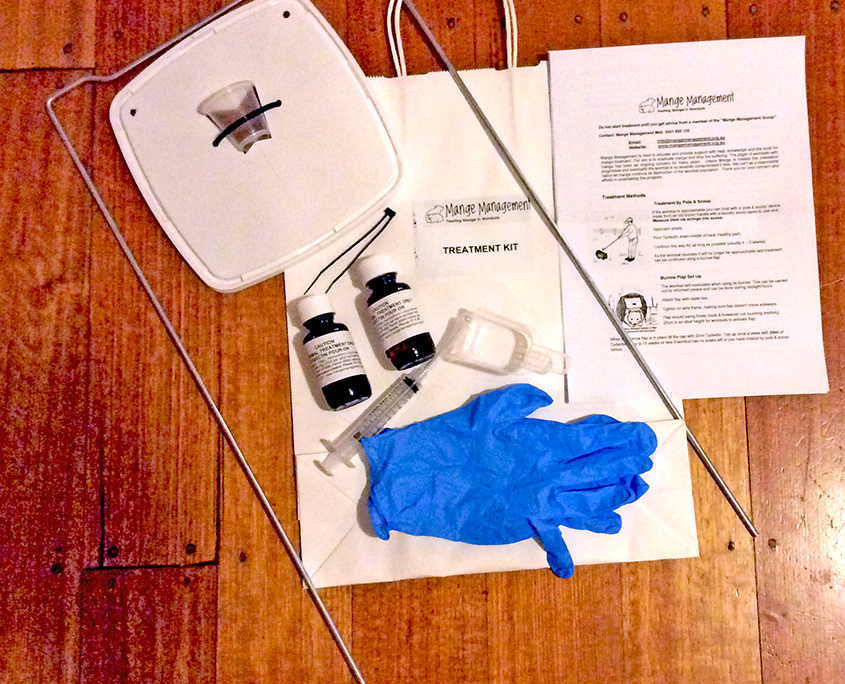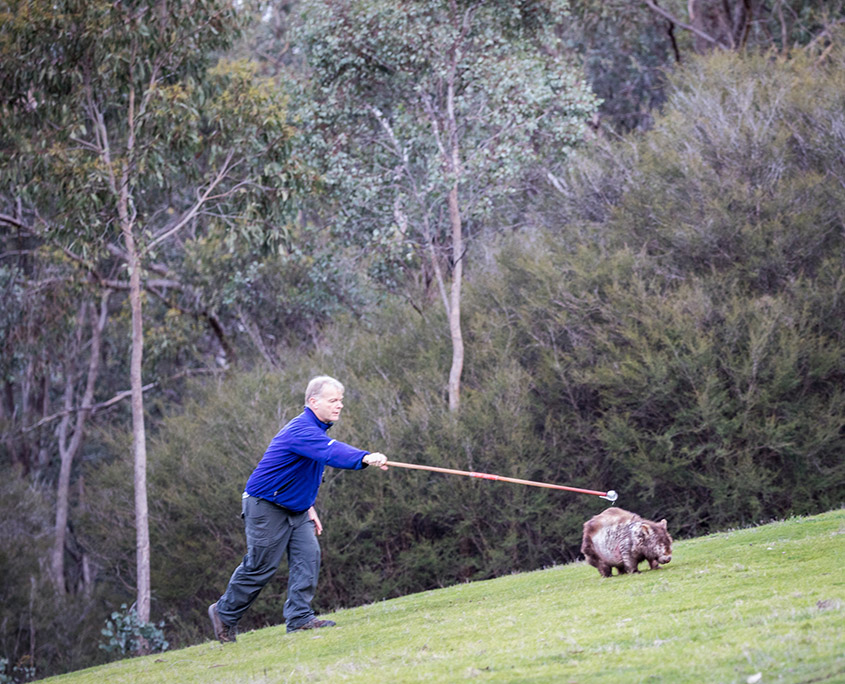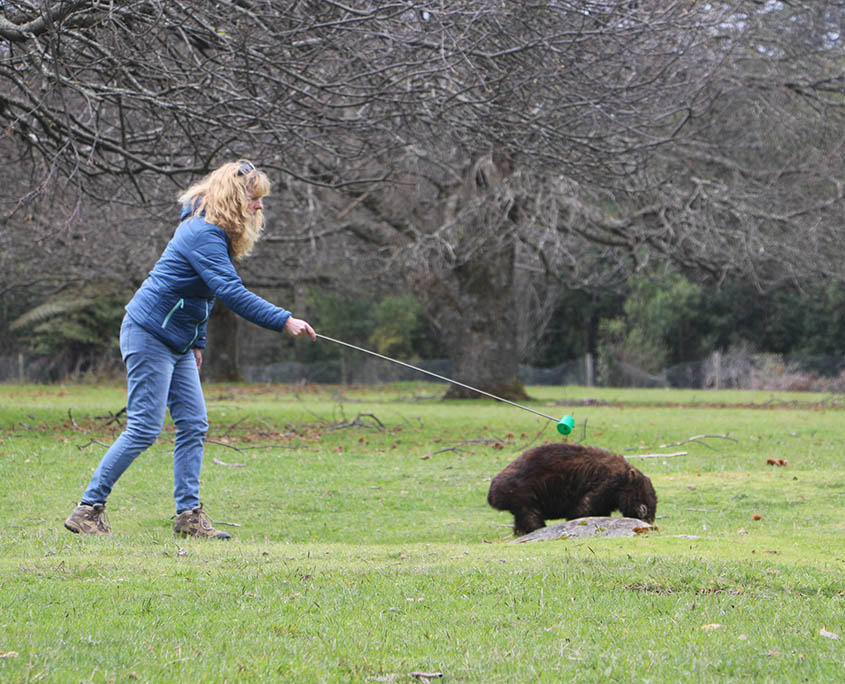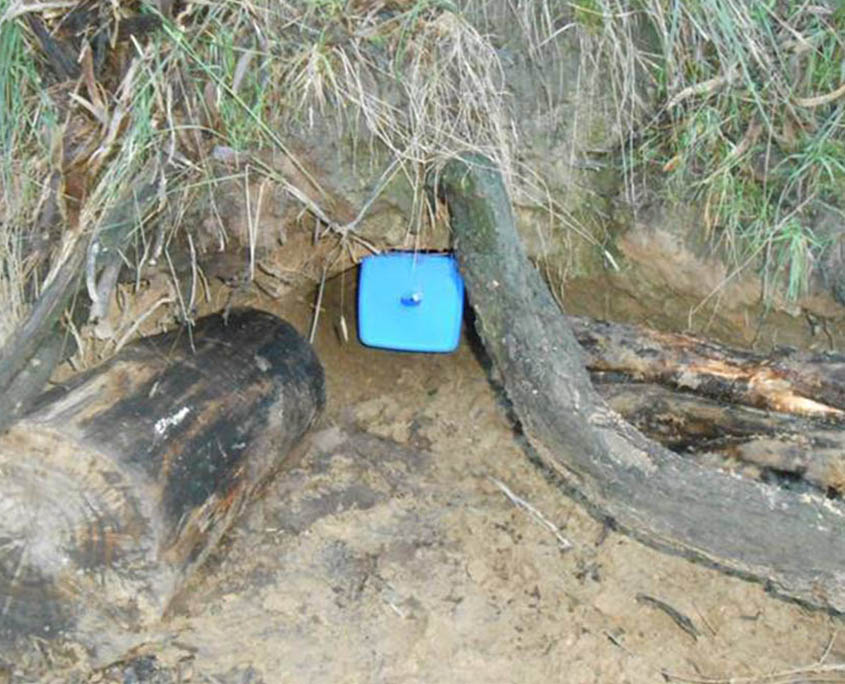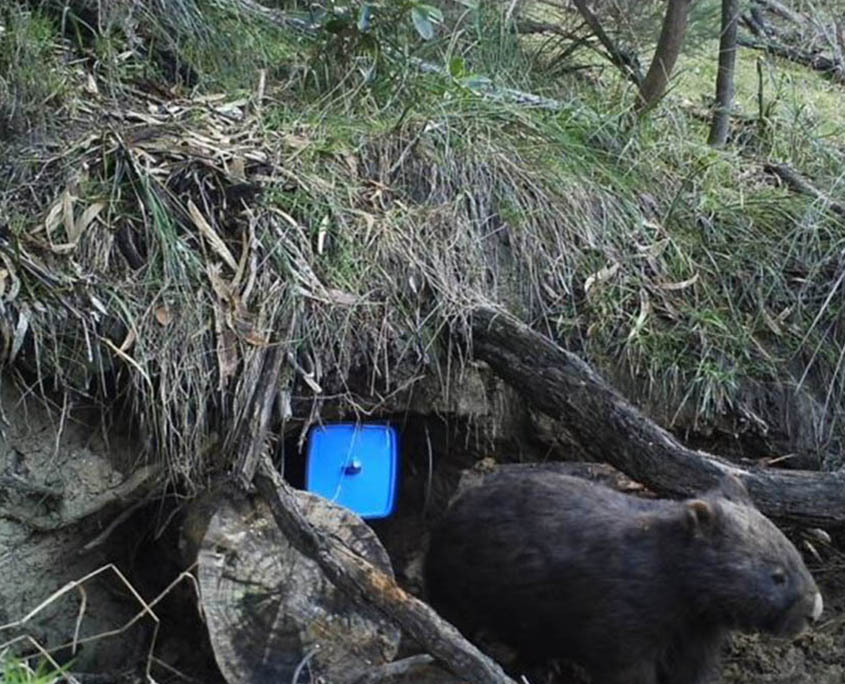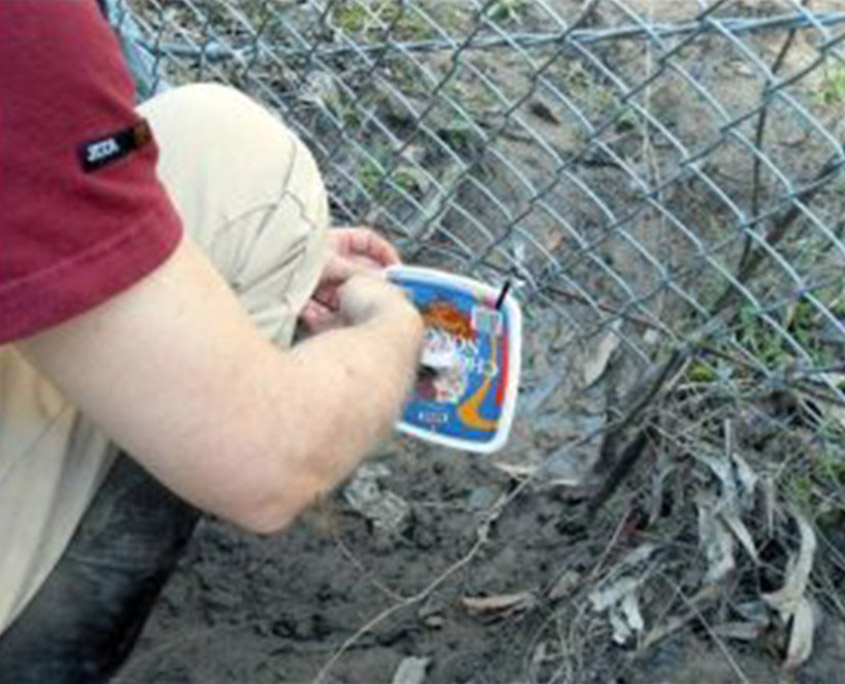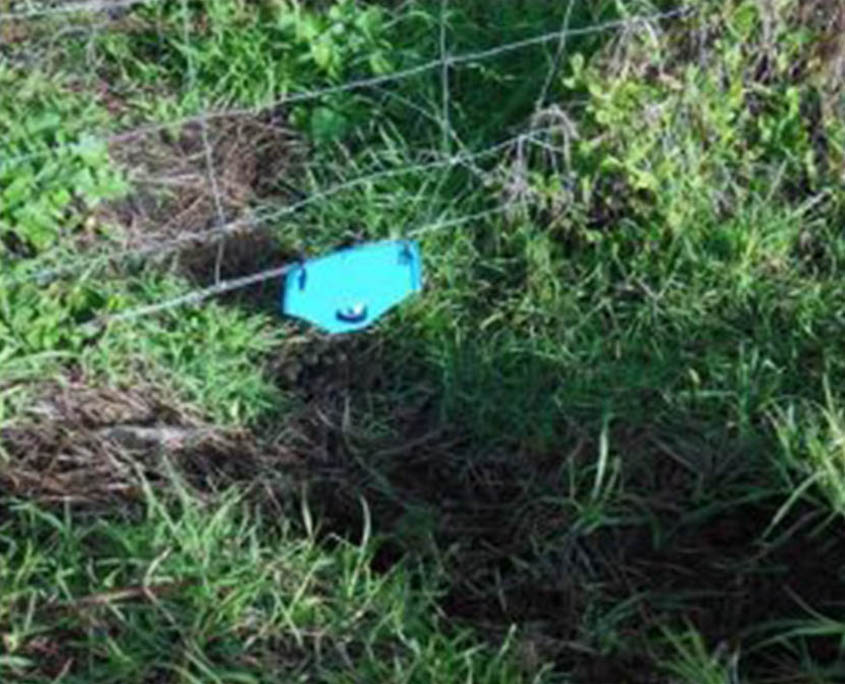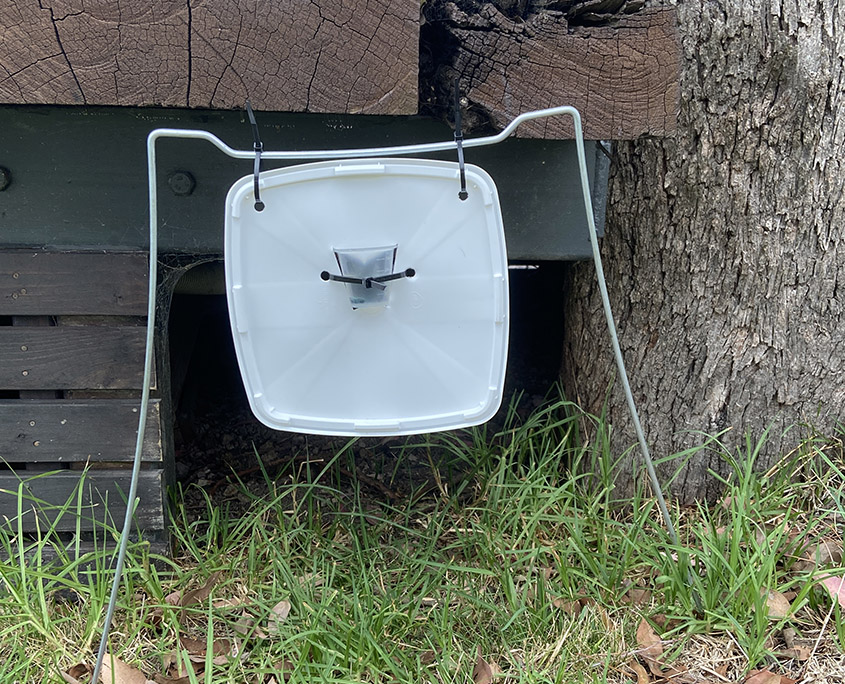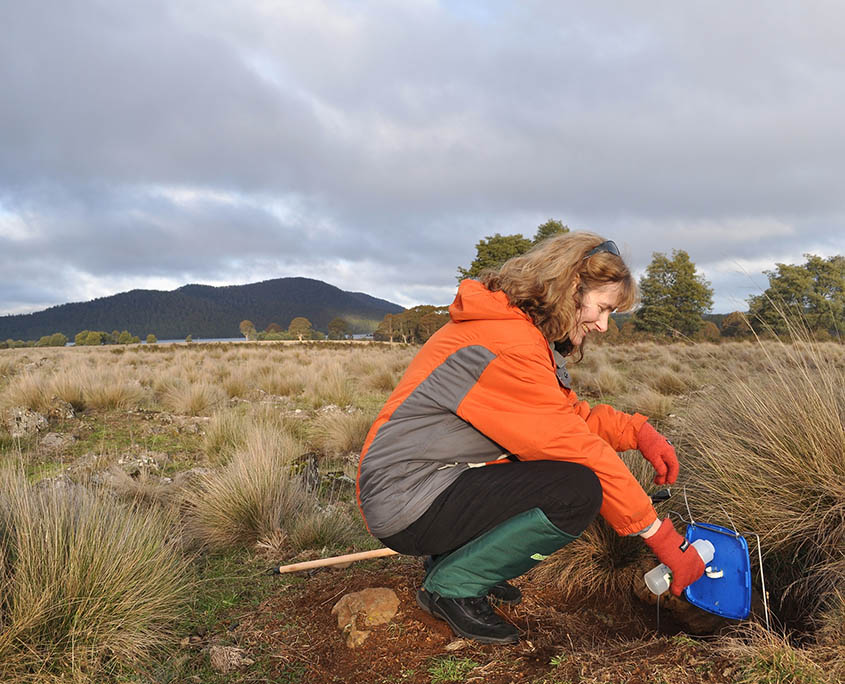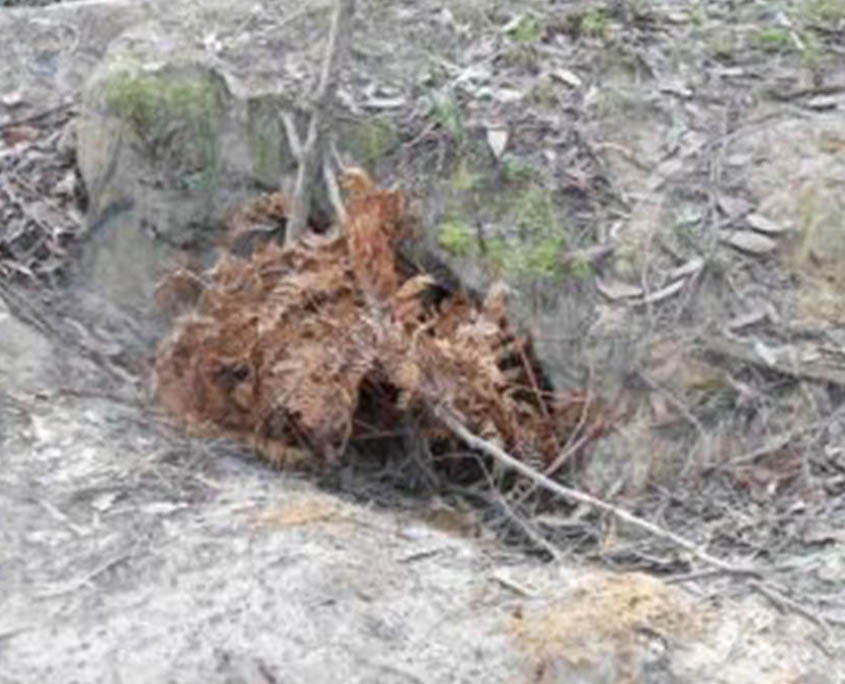Treating Mange
Wombat Mange
Free-living wombats do not cope well in captivity as they stress and with an already suppressed immune system they usually die within days, so bringing them into care is not a realistic option.
Treatments
The fact that wombats are nocturnal and live underground means treatment is difficult but not impossible. Many wombats live on private land so their health and well-being is dependent on the landowner’s concern and interest.
There is a simple way of treating wombats and preventing mange from spreading.
The two main methods
